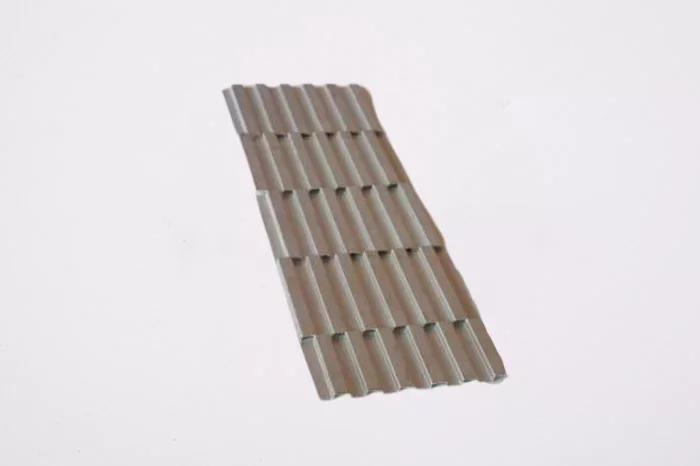Common radiator fins include aluminum, alloy, copper, brass, nickel, titanium, stainless steel, carbon steel, etc., among which aluminum and alloy are the most common.
The basic performance of finned tube heat exchange should have good weldability and formability, high mechanical strength, good corrosion resistance and thermal conductivity. Nonetheless, aluminum and alloys are characterized by increased tensile and higher tensile strength at lower temperatures. They are widely used all over the world, especially in low temperature compact heat exchange.
Features of aluminum fins
1. Low density
Through alloying and heat treatment, it can achieve the structure of architectural steel. Suitable for all kinds of transportation, especially for small vehicles, reducing weight and consumption.
2. Good corrosion resistance
Aluminium oxides are non-toxic under harsh conditions. With aluminum heat exchange, there is no need to worry about the internal air or liquid being damaged by oxides for a long time.
3. Good thermal conductivity
Particularly suitable for heat sinks, heat transfer evaporators and condensers.
4. High yield and die-cutting resistance.
Easy to process and shape.
When the root of the fin is grounded on the base bare tube, the heat will be transferred from the root of the fin along the height of the fin in the case of heat transfer from the inside to the outside. It is also continuously transferred to the surrounding fluid by convective heat transfer. As a result, the fin temperature gradually decreases along the height. This also shows that the difference between the fin temperature and the ambient fluid temperature is gradually decreasing, and the change in heat per unit is shrinking. Consequently, the effect of fin surface area on enhancing heat transfer is diminishing. The taller the fins, the less the added area contributes to heat exchange.

How does the fin pitch affect the fin ratio
Usually a smaller pitch can effectively increase the fin ratio. When considering flowing gas properties and fouling, the following factors should be noted.
A. Severe heavy ash deposition
Such as the waste gas of electric furnaces and converters in iron and steel plants and industrial cellar furnaces, the ash content is heavy. If finned tubes are used for heat exchange, a larger fin spacing is recommended. For example, if the spacing is more than 10mm, you need to increase the exhaust port and choose a blower.
B. There is a small amount of ashes, but it should also be noted.
Taking the exhaust of factory boilers and industrial boilers as an example, the fin spacing is 8mm, but it should be designed with self-blowing capability.
C. Dust-free or light-dust occasions.
Such as the exhaust gas on natural gas equipment or air cooler, the fin spacing is 4-6mm. For aluminum air coolers, 3mm is also selected as the fin spacing.
Aluminum fins manufacturer
Changzhou Sanqian Technology Co., Ltd. is a professional manufacturer of aluminum fins, specializing in the research and development, manufacturing, processing, production and sales of various cooling systems. The company has complete equipment, advanced production technology, complete varieties and reliable quality.